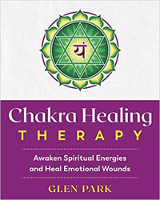
Image by Devanath
Narrated by Marie T. Russell
Video version
The ideology of industrial capitalism is dominated by the values of Achievement Consciousness, left-brain thinking, and the Solar channel of the third chakra. Aspiration and achievement, power and success, and fame and fortune are presented as highly esteemed goals in our education systems, our workplaces, the media, and the social fabric of modern societies. The unique individual is emphasized over the family or tribe.
An economic theory that contributed to modern society’s espousal of the values of Achievement Consciousness was Herbert Spencer’s theory of “survival of the fittest.” This was Spencer’s interpretation of Charles Darwin’s theory of natural selection, which Darwin accepted. Darwin, however, also emphasized the importance of cooperation as a survival strategy in the natural world.
Under capitalism, in principle although less often in practice, anyone with initiative, competitive spirit, and determination could become successful. The individual achiever was glorified. The negative aspect of this ideology was that people who were less successful, especially the poor, were blamed for their poverty and seen as deserving of it, even when that poverty was largely the result of problems in the larger public arena, such as lack of work or inadequate pay.
This ideology is still the dominant cultural story in today’s capitalist world and acts as a powerful influence on young people. It is embodied in our education systems, which encourage development through left-brain thinking and Achievement Consciousness. Many young people emerge from their education with left-brain dominance even if they began school with balanced or right-brain dominance.
However, the values of Affiliative Consciousness have also been espoused in the West for a long time. The desire to help others, to take care of the poor, the sick, and the vulnerable, to be tolerant of differences between people while recognizing the importance of relationships and family—these values have long been respected, especially in democratic socialist countries such as in Scandinavia.
When the Solar Plexus Chakra is dominant and the Heart Chakra is strongly flowing, then our whole experience of life begins to change. Now the Solar Plexus Chakra, rather than being the ruler of a person’s life, becomes the servant of spirit, organizing the practical tasks of life to serve the calling of the higher centers of that person’s being.
The Clash of Two Sets of Values
It is possible to view our current-day politics as the clash of these two sets of values, with right-wing parties espousing Achievement Consciousness and left-wing parties espousing Affiliative Consciousness. Coincidentally, the choice of the terms “left wing” and “right wing” fits perfectly with the Lunar (left/feminine) and Solar (right/masculine) channels.
I am not suggesting that every right-wing person has a dominant left brain and every left-wing person has a dominant right brain, because our choices about social values are more complex, influenced by the lower chakras and by adult experience. For example, I would imagine that most successful politicians are high achievers, probably with left-brain dominance, whatever their political views.
These two ideologies also have a gender bias. Traditionally, in a patriarchal society, the male is expected to follow the aspirational values of career and success of (Solar) Achievement Consciousness, while the female is encouraged to follow (Lunar) Affiliative Consciousness values of creating a home and family.
These gender roles have only started to change relatively recently in the West, and they are still dominant in many countries. What does not change is that all of us, as individuals, have to find some way to meet our opposing drives for autonomy and for relationship.
From Patriarchy to Crisis and Destruction?
Developmental psychology has its roots in the late nineteenth and early twentieth centuries, and unsurprisingly, its pioneers and leading figures were all men. As one would expect from this gender-biased patriarchal society, they were immersed in the values of Achievement Consciousness even as they were in the process of defining it, and they saw the development of the separate rational self as the pinnacle of human development.
It wasn’t until the women’s movement of the 1970s that women researchers began to question not only this dominant ideology but the fact that it had been structured into the theories of the male-led research programs. In her nicely titled book In a Different Voice (1982), Carol Gilligan describes her journey toward understanding a female path of development through relationship and connection, rather than independent achievement.
She is one of several women who laid the groundwork for understanding the stage of Affiliative Consciousness. These theorists argued that there is a strong cultural bias toward rational, analytical left-brain thinking and a denigration of intuitive, holistic right-brain thinking. And, scientific research has shown that more females are born with right-brain dominance and more males with left-brain dominance.
In The Master and His Emissary, Iain McGilchrist argues that, because of the dominance in the West of left-brain analytic consciousness, which focuses narrowly on particular aspects of reality, humanity is heading toward a global environmental crisis that could lead to its own destruction. There is an urgent need to reestablish the importance of right-brain holistic thinking, which is able to see the big global picture.
In reference to the title of his book, McGilchrist believes that the left brain should act as the servant of the more holistic-thinking right brain but instead has gotten itself into a place of cultural dominance, which will inevitably lead to crisis, as it is caught in a positive feedback loop of its own small logical parameters.
The Return of the Sacred Feminine
Similarly, but from a completely different perspective, Anne Baring, in her work The Dream of the Cosmos (2013), charts the historical rise and fall of the Feminine and of goddess worship through many millennia. She calls for a return to the sacred Feminine to avoid being faced with our own destruction:
“The effects on the world of the loss of the Feminine, the loss of soul, are incalculable. We can see the effects of this loss of soul everywhere today, not only in the devastation and pollution of vast swathes of the Earth, but in the unhappy, impoverished and hopeless existence that people endure in the hideous and ever-expanding suburbs of our cities, in the increase of diseases like cancer, diabetes and mental illness—particularly depression.
“The old are neglected and even ill-treated in a culture more interested in achieving targets than caring for people. The young are offered nothing to aspire to beyond the material goals promoted by the media. Women are degraded by having their bodies exploited to sell every kind of commodity.
“The human heart cries out for the return of beauty, for a place of sanctuary, for community and relationship, where the inner life is seen to be as important as the outer and where a unifying sacred order to life on this planet is recognised and honoured."
Joseph Chilton Pearce addresses his own concerns about the future of life on Earth by attacking one of the dominant cultural values of Achievement Consciousness, namely ambition:
“The axiom that ambition, the burning desire to “get ahead,” to be somebody, to amount to something… This so-called ambition, honored as the greatest of values and virtues, is a demonic cancer eating at the heart of life, Earth, and the human spirit.”
All these writers discuss the environmental crisis that will occur if the human race continues to sleepwalk toward catastrophic global warming. These authors, in their very different ways, are calling for a rebalancing of the Solar and Lunar channels on a mass scale.
Nourishing the Solar Plexus Chakra
The Solar Plexus Chakra is situated in the area of the upper abdomen, and it is associated with the adrenal endocrine glands, which govern our responses to stress. We are most aware of this part of our body when we feel stressed or when we are having difficulty “stomaching” something. We may experience shortness of breath or feel tension in the stomach area. This may be the result of the diaphragm tightening, which will interfere with our digestive processes. It is a symptom of the adrenals’ “fight, flight, or freeze” response.
Working as a body practitioner, I’ve noticed that when they are stressed, people respond differently, physically speaking, in this area of the body. Some people will feel very held by a tight diaphragm (freeze response). Other people who are feeling very vulnerable will be quite collapsed and hollow in this area, and their response to the stress will be a desire to escape (flight response). In still others, the upper abdominal area feels as though it has a strong protective balloon surrounding it, and their response to the stress will be more about how they are going to overcome it (fight response).
It is easier to notice the physical experience of this chakra during a time of stress, but it also responds to more positive experiences, such as when we feel the thrill of having achieved something difficult. When we are “bursting with pride,” for example, this area feels like it is actually expanding, rising up into the chest.
Lunar/Solar (Feminine/Masculine) Breathing Exercise
This is an ancient yoga exercise from one of the Tantric traditions. It encourages the Lunar and Solar channels to come into balance. If this exercise feels stressful or difficult in any way, just stop doing it and breathe normally again.
Sit or lie in a comfortable position and get into a calm and relaxed state. Notice the breath entering and leaving your body. Feel it passing through your nose and throat and into your chest area, the gentle expansion of your chest and abdomen as it fills your lungs, the gentle contraction as it leaves, and the pause before another in-breath begins. As much as possible, just witness your sensitive animal body breathing you, in its own natural rhythms.
When we breathe through our nose, usually one nostril dominates, and which nostril is dominant can change at different times of the day and night. When that dominance moves from one nostril to the other, both nostrils breathe together for a while. Now, as you breathe, notice which nostril is dominant, and keep your awareness on that nostril breathing you for the next five breaths.
Set your intention to move from the dominant nostril to the nondominant one. See whether you are able to change the dominance just by intending it, and allow yourself to breathe through the newly dominant nostril for five breaths.
Now see if you can breathe through both nostrils at the same time for five breaths. Explore the differences between these three different ways of breathing. You can increase or decrease the number of breaths, as you desire, before you change nostrils.
If you are unable to make the change from one nostril to the other just by your intention, do the exercise with a pillow on your chest so you can rest your arms on the pillow while using your hand to gently block one nostril, as needed, to allow the other nostril to become dominant.
Copyright 2021. All Rights Reserved.
Published by Destiny Books, an imprint of Inner Traditions, Intl.
Reprinted with permission. www.innertraditions.com
Article Source
Chakra Healing Therapy: Awaken Spiritual Energies and Heal Emotional Wounds
by Glen Park
 In this in-depth guide to working with the chakras, author Glen Park draws on her decades of experience as a Chakra Therapist to explain how the chakras can be understood as an embodied map of the psyche, with each chakra representing a different stage of development from infancy and childhood through adulthood, with the Heart Chakra playing a central role in awakening the spiritual potential of the upper chakras.
In this in-depth guide to working with the chakras, author Glen Park draws on her decades of experience as a Chakra Therapist to explain how the chakras can be understood as an embodied map of the psyche, with each chakra representing a different stage of development from infancy and childhood through adulthood, with the Heart Chakra playing a central role in awakening the spiritual potential of the upper chakras.
The author examines each chakra individually on the physical, psychological, psychic, and spiritual level, as well as through the lens of the solar (masculine) and lunar (feminine) channels. She shows how the connections between the chakras and developmental stages are paralleled in the findings of Western psychology and neuroscience and how our collective expressions of the chakras influence cultural trends in society.
For more info and/or to order this book, click here.
 About the Author
About the Author
Glen Park has taught workshops in the Alexander Technique and chakra healing therapy for more than 30 years in Europe, the United States, Australia, and Japan. She has presented at conferences for Alexander Technique International and the Society of Teachers of the Alexander Technique. She is also the author of The Art of Changing.




























